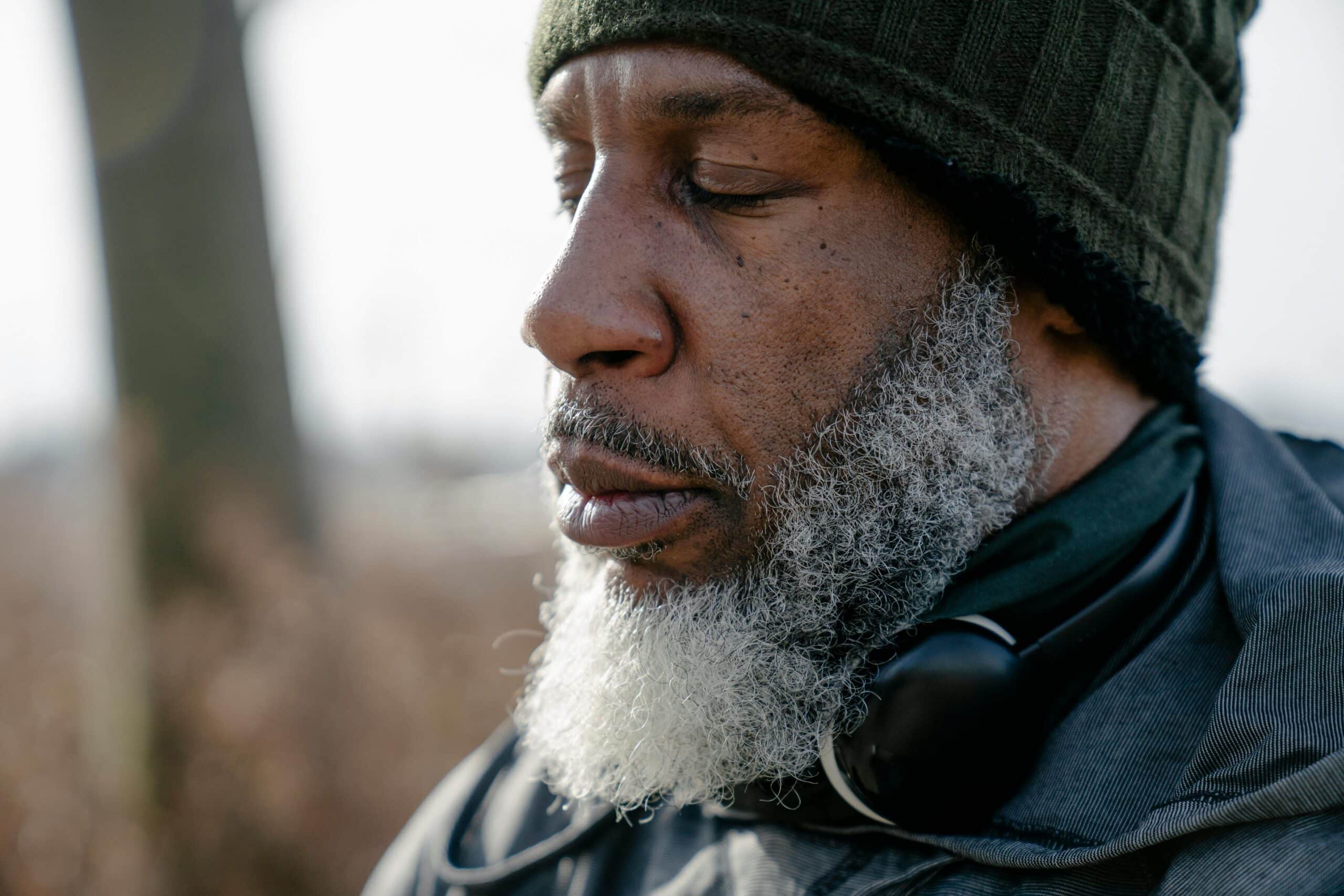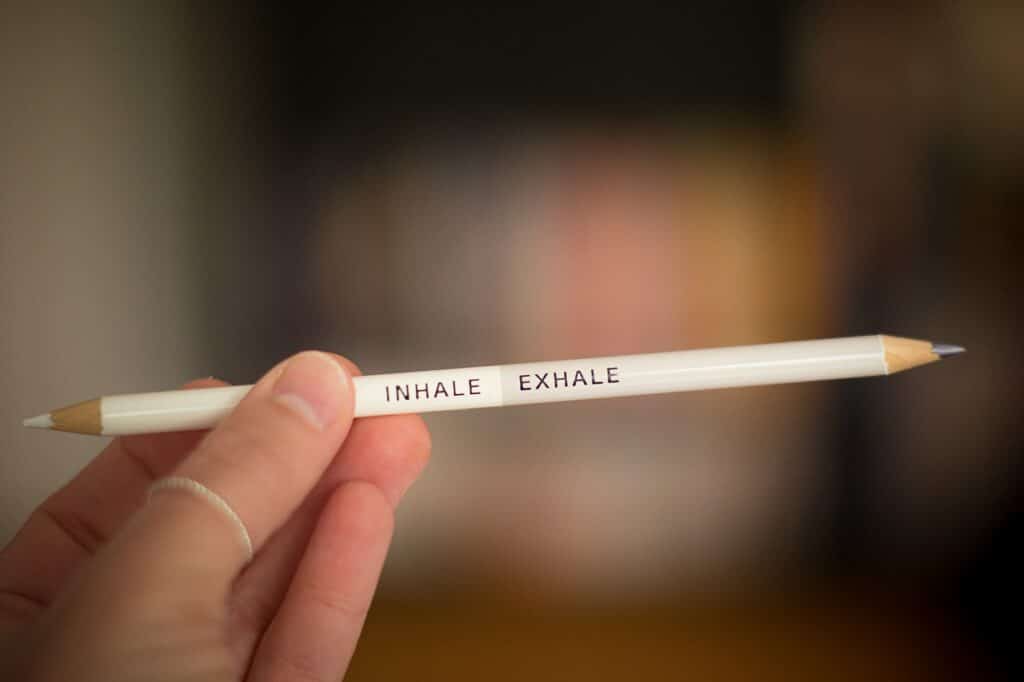
Meditation is a pretty simple idea: sit down, breathe, and try not to get too distracted. If you can manage that, there’s a good chance you’ll find yourself beginning to relax. Your body and mind will slow down. But that breathing part isn’t always as easy as it seems, so here are 5 simple breathing exercises for relaxation you can try today.
Breathing is one of the most important parts of meditation practice. It can keep you focused, serving as an anchor to a distracted mind. It also has deep connections to the nervous system. There’s a reason for why your breathing becomes more rapid when you’re excited, and when you’re relaxed it’s slower and deeper.
Controlling your breathing can have profound and immediate effects on how you feel, both mentally and physically. So, if you’re overwhelmed in your daily life, take a moment and think about your breath. Incorporating breathing exercises into your daily routine can be helpful to reduce stress and promote a feeling of relaxation.

5 simple breathing exercises
Deep Belly Breathing (Diaphragmatic Breathing):
- Deep belly breathing is a technique that helps to activate the body’s relaxation response. To practice deep belly breathing, find a comfortable seated position or lie flat on your back. Place one hand on your chest and the other on your abdomen. Take a slow, deep breath in through your nose, allowing your abdomen to expand like a balloon. Feel the air filling up your lungs, pushing your diaphragm down. As you exhale, gently release the air through your mouth or nose, feeling your abdomen deflate. Repeat this process for several minutes, focusing on the sensation of your breath flowing in and out.
4-7-8 Breathing:
- The 4-7-8 breathing technique, popularized by Dr. Andrew Weil, is a simple yet powerful method to induce relaxation and alleviate anxiety. Start by sitting in a comfortable position and placing the tip of your tongue against the ridge of tissue behind your upper front teeth. Inhale quietly through your nose for a count of four, allowing the breath to fill your lungs. Hold your breath for a count of seven. Then, exhale audibly through your mouth for a count of eight, making a whooshing sound as you release the air. Repeat this cycle three more times, making sure to maintain a steady rhythm and focusing on the sensation of your breath.
Alternate Nostril Breathing (Nadi Shodhana):
- Nadi Shodhana, or alternate nostril breathing, is a pranayama technique from yoga that helps to balance the flow of energy in the body and calm the mind. Sit comfortably with your spine erect and shoulders relaxed. Place your left hand on your left knee with your palm facing up. Bring your right hand towards your face and place your index and middle fingers on your forehead between your eyebrows. Close your right nostril with your right thumb and inhale deeply through your left nostril. At the peak of your inhalation, close your left nostril with your ring finger, releasing your right nostril, and exhale completely. Inhale through your right nostril, then close it with your thumb and exhale through your left nostril. This completes one cycle. Continue alternating nostrils for several rounds, maintaining a smooth and steady breath.

Box Breathing (Square Breathing):
- Box breathing is a technique used by military personnel and athletes to enhance focus and manage stress. Begin by sitting in a comfortable position and taking a few deep breaths to relax. Imagine drawing a square with four equal sides. Inhale deeply through your nose for a count of four, envisioning the first side of the square. Hold your breath for a count of four, tracing the second side of the square. Exhale slowly and completely through your mouth for a count of four, completing the third side of the square. Finally, hold your breath out for a count of four, completing the fourth side of the square. Repeat this cycle for several minutes, maintaining a steady rhythm and focusing on the square visualization.
Breath Counting (Ganana):
- Breath counting is a mindfulness practice that helps to anchor your attention to the present moment and quiet the mind. Find a comfortable seated position and close your eyes gently. Begin by taking a few deep breaths to center yourself. Once you feel settled, start counting each inhalation and exhalation, starting from one and counting up to ten. For example, inhale – one, exhale – two, inhale – three, and so on. Or if you prefer you can try counting only the exhalations. When you reach ten, start again from one. If you find your mind wandering or lose count, simply acknowledge the distraction and gently return your focus to your breath, starting again from one. Practice breath counting for several minutes, allowing yourself to cultivate a sense of calm and presence.
All of these breathing exercises are slightly different. Find one that gives you the most benefit. Incorporating one (or more) of these 5 simple breathing exercises for relaxation into your daily routine can provide a powerful antidote to stress and anxiety, helping you to cultivate a greater sense of calm, balance, and well-being.
Happy sitting!
Reading more from the Still Sitting blog and learn about the health benefits of meditation.
